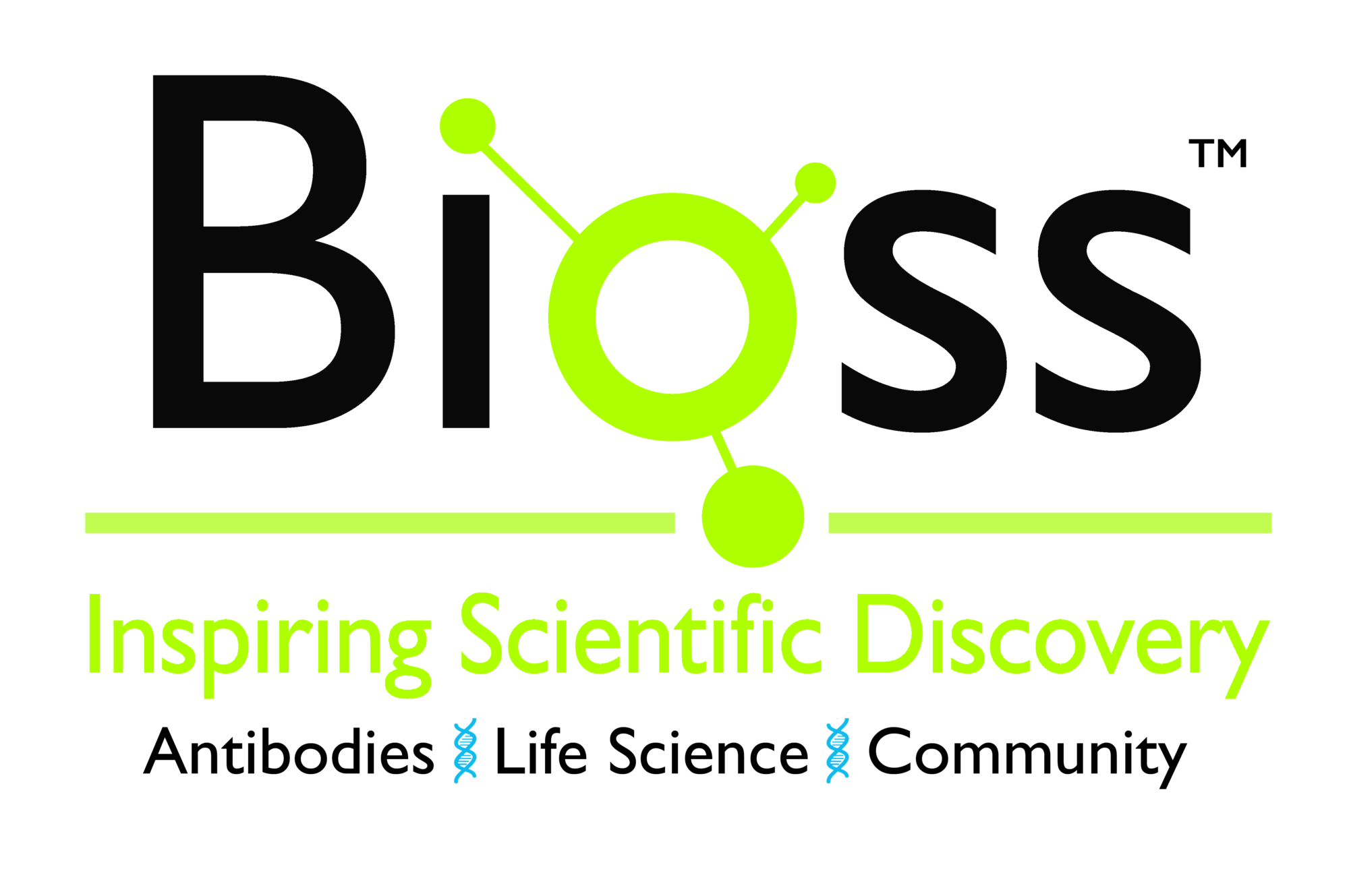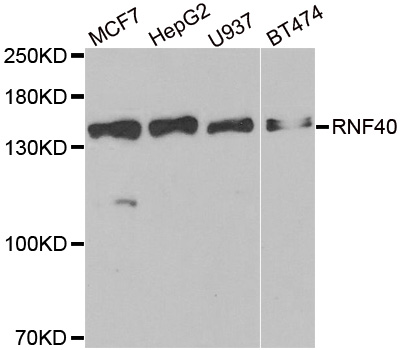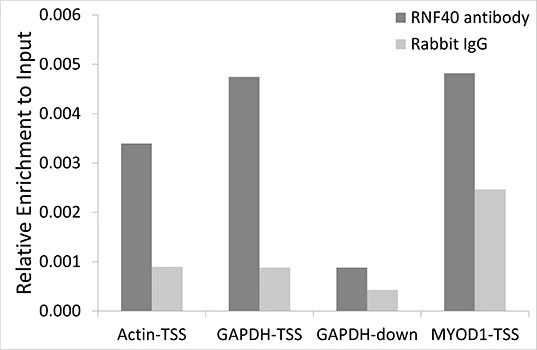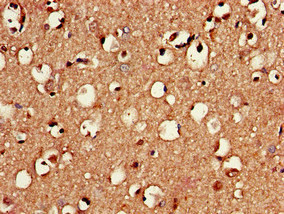RNF40 antibody [N1N2], N-term
GTX115295
ApplicationsImmunoFluorescence, ImmunoPrecipitation, Western Blot, ImmunoCytoChemistry, ImmunoHistoChemistry, ImmunoHistoChemistry Paraffin
Product group Antibodies
ReactivityHuman
TargetRNF40
Overview
- SupplierGeneTex
- Product NameRNF40 antibody [N1N2], N-term
- Delivery Days Customer9
- Application Supplier NoteWB: 1:500-1:3000. ICC/IF: 1:100-1:1000. IHC-P: 1:100-1:1000. IP: 1:100-1:500. *Optimal dilutions/concentrations should be determined by the researcher.Not tested in other applications.
- ApplicationsImmunoFluorescence, ImmunoPrecipitation, Western Blot, ImmunoCytoChemistry, ImmunoHistoChemistry, ImmunoHistoChemistry Paraffin
- CertificationResearch Use Only
- ClonalityPolyclonal
- Concentration1 mg/ml
- ConjugateUnconjugated
- Gene ID9810
- Target nameRNF40
- Target descriptionring finger protein 40
- Target synonymsBRE1B, RBP95, STARING, E3 ubiquitin-protein ligase BRE1B, 95 kDa retinoblastoma protein binding protein, 95 kDa retinoblastoma-associated protein, BRE1 E3 ubiquitin ligase homolog B, BRE1-B, RING-type E3 ubiquitin transferase BRE1B, Rb-associated protein, ring finger protein 40, E3 ubiquitin protein ligase
- HostRabbit
- IsotypeIgG
- Protein IDO75150
- Protein NameE3 ubiquitin-protein ligase BRE1B
- Scientific DescriptionThe protein encoded by this gene contains a RING finger, a motif known to be involved in protein-protein and protein-DNA interactions. This protein was reported to interact with the tumor suppressor protein RB1. Studies of the rat counterpart suggested that this protein may function as an E3 ubiquitin-protein ligase, and facilitate the ubiquitination and degradation of syntaxin 1, which is an essential component of the neurotransmitter release machinery. [provided by RefSeq]
- ReactivityHuman
- Storage Instruction-20°C or -80°C,2°C to 8°C
- UNSPSC12352203
References
- Fujimoto M, Takii R, Matsumoto M, et al. HSF1 phosphorylation establishes an active chromatin state via the TRRAP-TIP60 complex and promotes tumorigenesis. Nat Commun. 2022,13(1):4355. doi: 10.1038/s41467-022-32034-4Read this paper






